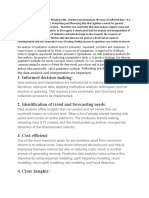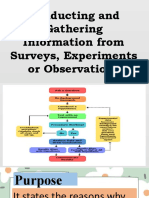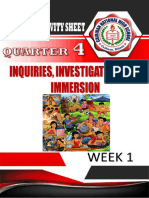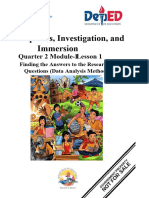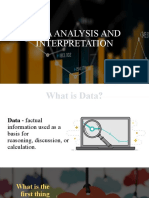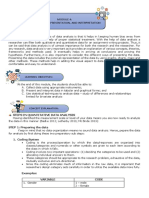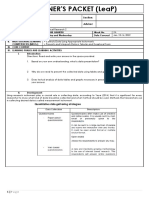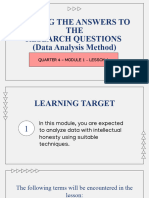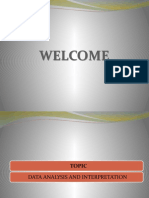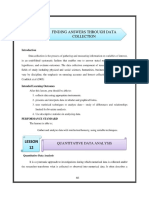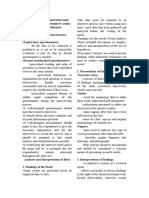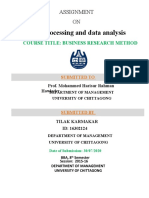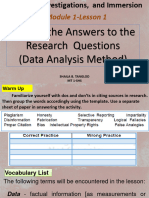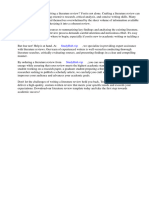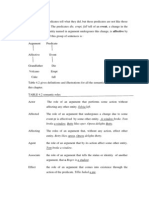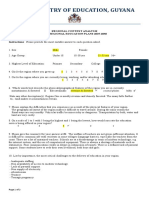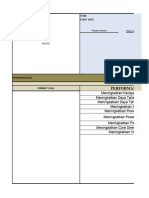0% found this document useful (0 votes)
25 views32 pages3is Module 3
The document covers various aspects of data analysis, including its definition, correct and incorrect practices, and the importance of choosing appropriate methods for research. It also discusses communication forms, qualitative and quantitative analysis, and presents findings from multiple research studies related to school attendance, food spoilage, and social media usage. Additionally, it emphasizes the significance of ethical considerations and effective data presentation techniques in research.
Uploaded by
justincoyoca245Copyright
© © All Rights Reserved
We take content rights seriously. If you suspect this is your content, claim it here.
Available Formats
Download as DOCX, PDF, TXT or read online on Scribd
0% found this document useful (0 votes)
25 views32 pages3is Module 3
The document covers various aspects of data analysis, including its definition, correct and incorrect practices, and the importance of choosing appropriate methods for research. It also discusses communication forms, qualitative and quantitative analysis, and presents findings from multiple research studies related to school attendance, food spoilage, and social media usage. Additionally, it emphasizes the significance of ethical considerations and effective data presentation techniques in research.
Uploaded by
justincoyoca245Copyright
© © All Rights Reserved
We take content rights seriously. If you suspect this is your content, claim it here.
Available Formats
Download as DOCX, PDF, TXT or read online on Scribd
/ 32




